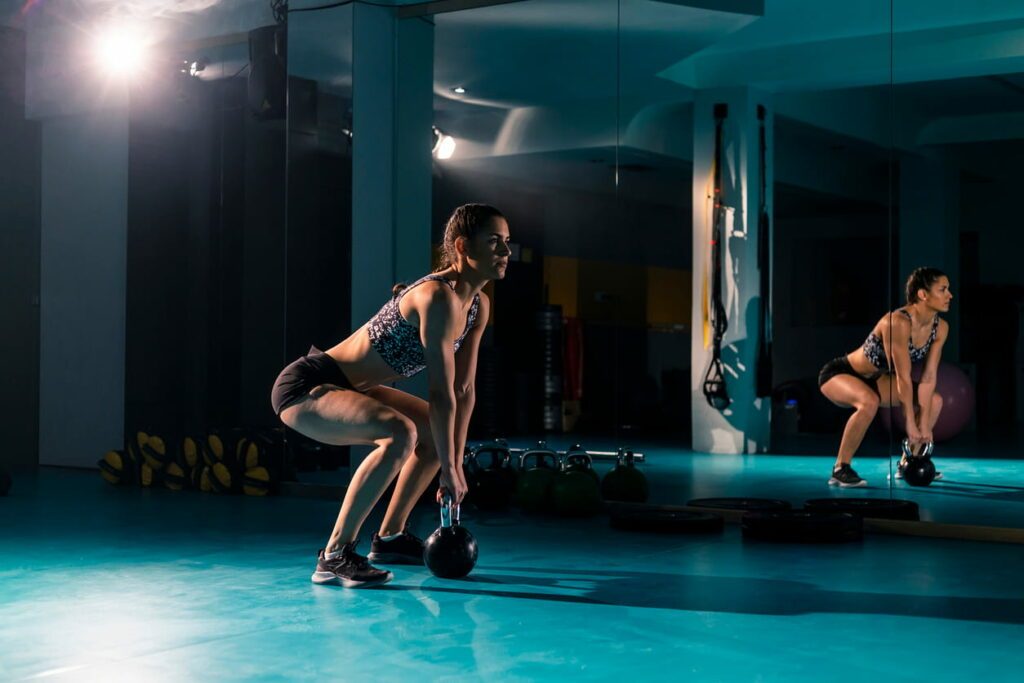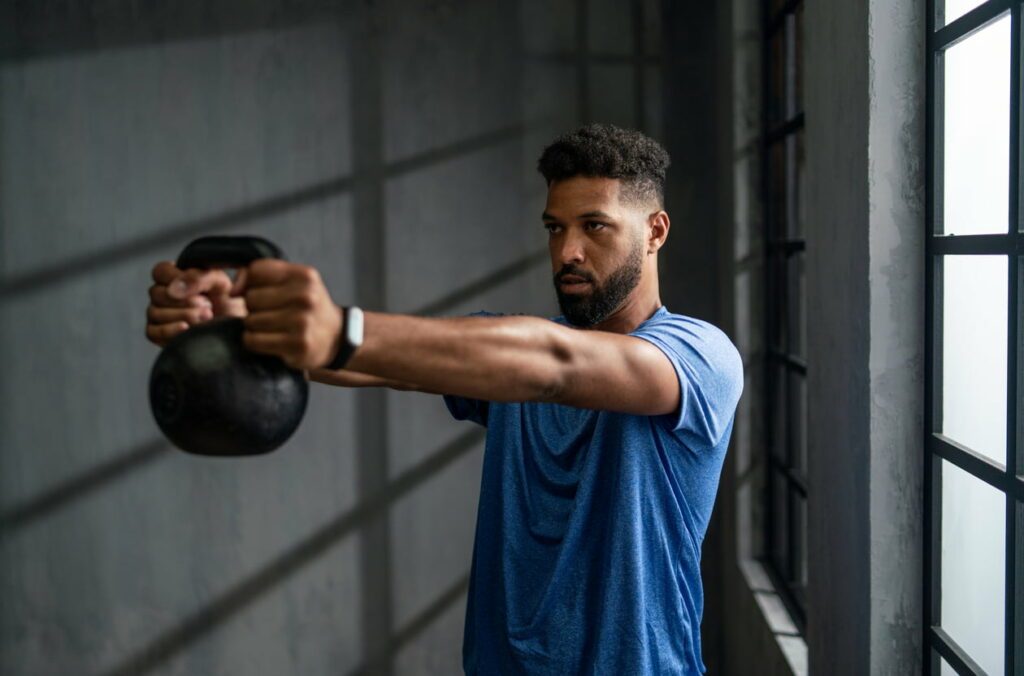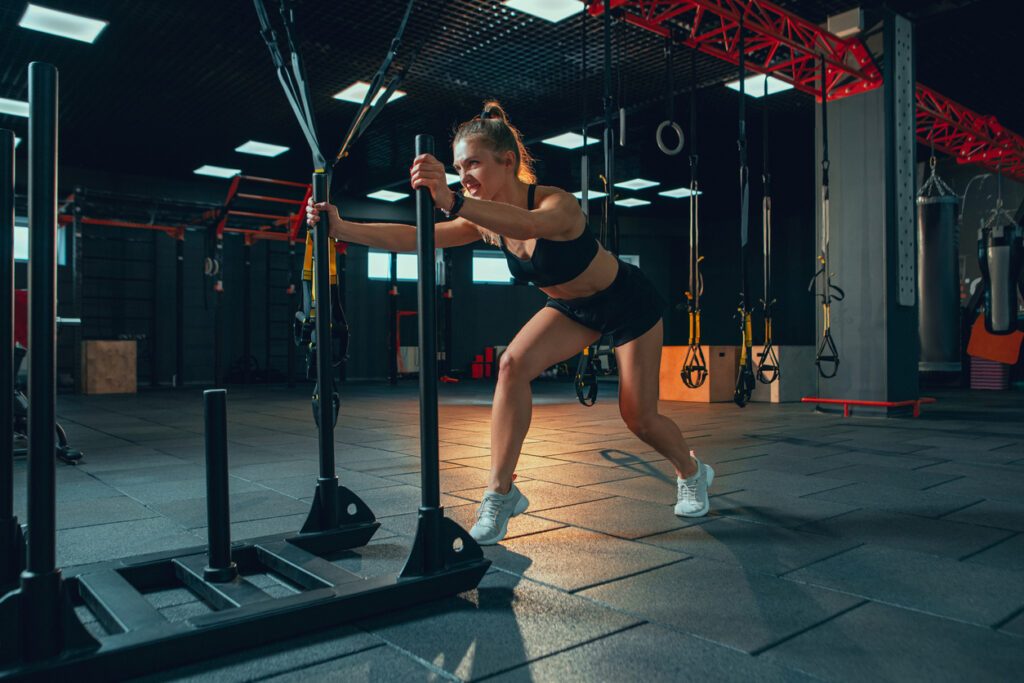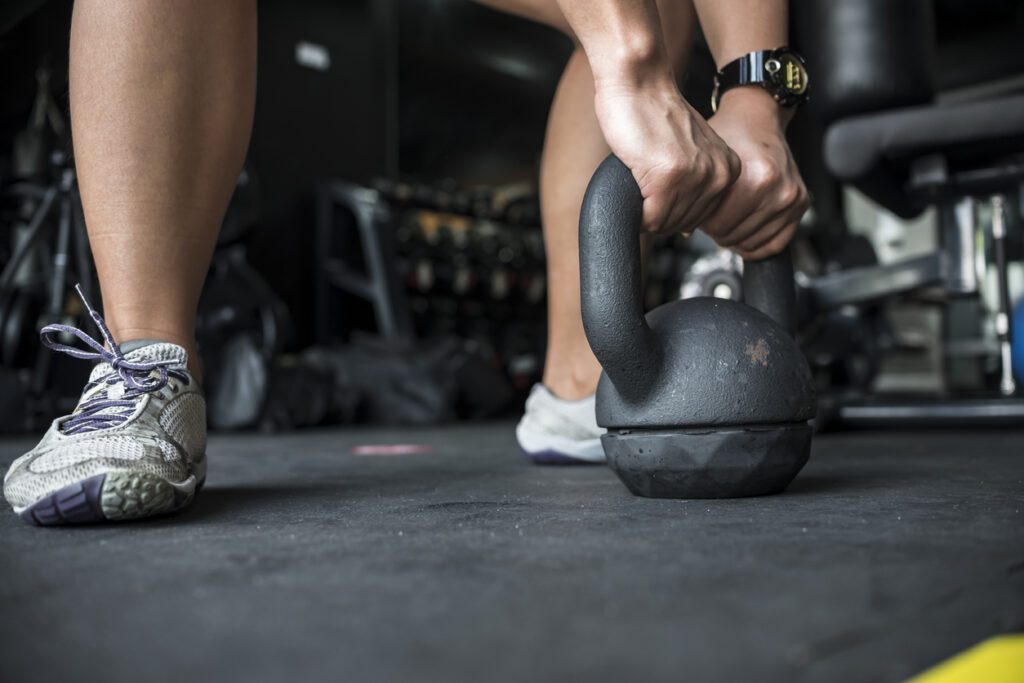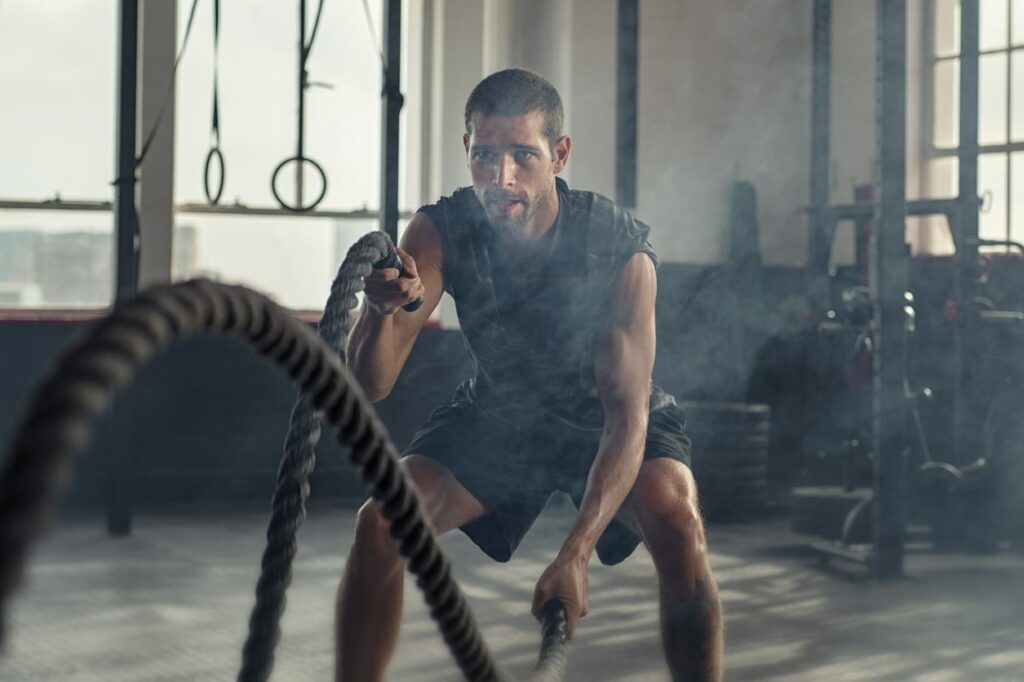
Summary
Welcome / Welcome / Tips for getting started / HIIT how many times a week: how often to train?
HIIT how many times a week: how often to train?
THE HIIT is a short and intensive training method. This training is so practical that we would be tempted to do it as often as possible, but it remains a training very physically demanding. But above all, Is it harmful to do it too often? This article will answer your questions.
Ready to sweat? Let's go!⚡
Summary
What is HIIT?
First of all, we will introduce you to HIIT. If you already know your stuff, a little refresher won't hurt!
HIIT, abbreviation of English High Intensity Interval Training, is a training method which consists of alternate periods of intense effort and short periods of recovery. It is a training which focuses above all on the cardiovascular work.
HIIT is a high intensity interval training, composed of several phases of work and rest. The objective is to achieve a maximum intensity during working time. Between each exercise, you take a few seconds of rest before returning there.
The benefits of HIIT
The HIIT method presents many advantages for its practitioners.
It helps you lose weight
Since cardio work is at the heart of this workout, you will be required to exert yourself a lot. The exercises follow one another with very little recovery. YOU burn as many calories as possible, ideal for weight loss!
The high-intensity effort you put in during your workout leads to a long-term calorie consumption : even after the end of your session, you continue to burn calories thanks to theafterburn effect.
He is fast
A HIIT workout can be done in very little time. Typically, a complete HIIT circuit lasts between 15 and 20 minutes. However, you have alternatives to shorten it. We think in particular of the Tabata method, a HIIT workout that spans just four minutes: 8 sets, 20 seconds on, 10 seconds rest.
It can be done anywhere
If you don't have time to go to the gym to train, you can opt for a HIIT circuit at home, because yes, no equipment needed to do HIIT ! The majority of HIIT circuits include a majority of exercises at body weight, whether strength training exercises (push-ups, squats, lunges, etc.) or cardio exercises (burpees, squat jumps, etc.).
It works on endurance
Doing HIIT works your cardiovascular and respiratory endurance. The more you train, the more your respiratory and cardiovascular systems will be able to support intensive efforts.
He is playful
With HIIT, you are constantly moving. You can compose your circuit as you wish, no need to repeat the same circuit each session. You won't get tired of it!
It improves your aerobic and anaerobic capacity
Your capacity aerobic and capacity anaerobic correspond respectively to your ability to train at low intensity over a long period of time and train yourself at high intensity over a short period.
Can you do HIIT every day?
It is not recommended to train in HIIT every day, and this for many reasons.
Recovery
First of all, it is important to recover well between two sports sessions. HIIT is a very intense physical effort which is hard to recover quickly for people who are not used to it. Your cardiovascular system And your muscles are greatly tested during your training. It is dangerous to exert too much stress on them without having been able to get a minimum of rest. If you put your muscles to the test when they haven't had enough rest, your muscle fibers are at high risk of injury because your energy stores are depleted more quickly.
Overtraining
If there is a significant imbalance between your training and your recovery, You are in overtraining situation. Your muscles are no longer able to provide sufficient effort, but you continue to use them. Overtraining slows down your progress.
The dangers of overtraining
If you don't give your muscles enough time to repair themselves, you will be more exposed to damage. risk of injury, muscular or joint.
Additionally, overtraining has a harmful effect on your mind. This leads to a drop in performance, even if you continue to train. You can then become demotivated quickly.
Signs of overtraining
Overtraining can manifest itself in several ways:
- A decline in sports performance ;
- A drop in motivation ;
- Of the difficulty falling asleep ;
- Nervousness ;
- Stress ;
- Weakening of the immune system ;
- A decreased libido.
It is obviously possible to experience any of these points without overtraining. If this situation persists for more than a week, you will need to take some time off from sport (at least a week).
Fight against overtraining
Understand the importance of recovery
Firstly, it is important to be aware of the importance of recovery. When you start exercising or have a goal to achieve quickly, you may want to do sports every day and put in as much effort as possible during the sessions.
When we arrive at give as much importance to recovery as to training, we have reached a very important step. Take at least two days of rest in your week.
Do not force the aches
If you have soreness in a muscle group, let him rest and don't ask for it, you will only wear it out.
Pay attention, Just because you don't have soreness doesn't mean your muscles have completely recovered.. Whatever happens, don't work the same muscle two days in a row. Let you at least two days of recovery, the ideal would be three days.
Eavoid isolation exercises
During your workout, do not perform not too many isolation exercises. These very targeted exercises are very demanding, and will put a lot of strain on your muscles. Vary the polyarticular exercises and one or two isolation exercises.
So how often should you train?
We recommend that you space out your HIIT sessions by at least two days.
If you practice another sport outside of it, particularly bodybuilding, or are starting HIIT, do not do no more than two HIIT sessions per week.
Your training frequency mainly depends on your physical condition. If you are new to HIIT, it will be difficult for you to train several times a week. HAS Conversely, if you are experienced, you are able to train more than twice a week, if you mainly want to develop your cardiovascular endurance.
To adopt such a rhythm, you must have full knowledge of one's recovery capabilities and organize your training in such a way as to do not overuse the same muscle groups and so avoid injuries.
Alternate HIIT and strength training
If you are looking to lose fat, alternate between HIIT sessions and muscle strengthening sessions. Indeed, when you gain muscle, you increase your metabolism. The more developed your muscles are, the more calories they will need to consume, even at rest.
In a week, for example, you can do three weight training sessions and two HIIT sessions. The more muscle you strengthen, the more calories you will burn during your HIIT sessions.
Alternatives for active rest
Let's be honest, taking days off can be frustrating. To still move a little, you can do what we call active rest : you take a break from your sporting routine by still carrying out a low-intensity physical activity.
Stretching
To achieve active rest, you can do a stretching session during your recovery day. This will allow you to perform physical activity without significant muscular effort.
Doing stretching sessions is beneficial for your muscles and joints. Stretching regularly allows you to gain mobility by making your muscles more elastic. The more we work on the mobility of our body, the more we limits the risk of injury.
Yoga
Yoga is also a good alternative to staying active without putting in significant effort. This practice has many benefits, including the following:
- He improves flexibility and mobility ;
- It allows to fight against stress through different breathing and meditation techniques;
- He improves sports performance : yoga movements require synchronization which develops connection between brain and muscles And improve your movements.
Yoga is therefore a good way to actively rest between two HIIT sessions.
HAS what time of day to train?
There is no ideal schedule for optimal training. It mostly depends on your habits.
Work out in the morning
Training at the start of your day has advantages:
- You start your day well;
- YOU increase your energy for the day to come;
- YOU improve your mood ;
- You are more alert ;
- You fall asleep more easily (doing HIIT in the evening will keep you awake for a while after training)
Be careful not to perform a HIIT workout on an empty stomach. Have a snack before working out.
Training at the end of the day
If you're not a morning person, don't worry, late-day workouts also have benefits:
- This allows you to unwind after a long day;
- As your body temperature is higher at the end of the day, you perform better at that time;
We advise you, if possible, to carry out your HIIT session at the end of the afternoon rather than in the evening. Such intense cardiovascular training done late will affect your sleep.
Conclusion
Given the benefits of HIIT, you might be tempted to do it every day. This pace is strongly discouraged. Doing HIIT every day puts you at great risk of injury.
It is especially important tolisten to your body : if you feel tired, don't hesitate to take a few days off. There is no shame in allowing yourself some recovery, it will help you reach your goal faster! If you are used to HIIT, you can do several sessions per week.
Rest should not be a constraint. You can do active rest, which will be beneficial for your sporting activity.
HIIT at DRIP
So, want to try HIIT? Come sweat at DRIP!
Our concept: a circuit of 7 bases, 3 turns and 1 minute per base, all in the company of our coaches and their exclusive playlists to push you to give your all!
For burn as many calories as possible, YOU chain the different bases without recovery.
At DRIP, the trainings are accessible to all : whether you are used to HIIT or not, we are happy to welcome you to our studio!
Ready to sweat? In this case, we give you meet at the studio 50 rue de Monceau, in the 8th arrondissement of Paris. You'll love to hate us!❤️🔥
Share
Tagged
Read also
follow us
on instagram
To follow all our news,
take advantage of our tutorials and participate
in our many competitions.
BREAKING NEWS!
Receive our newsletter.
